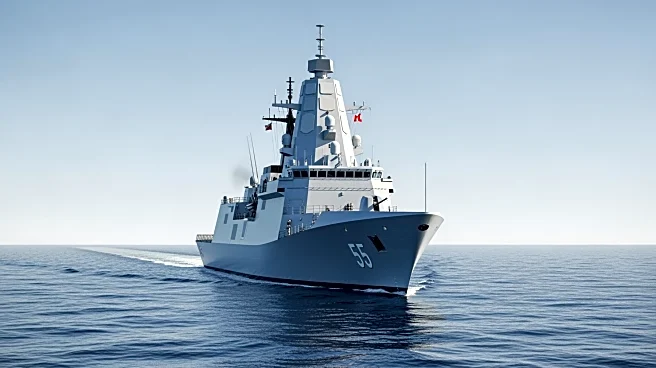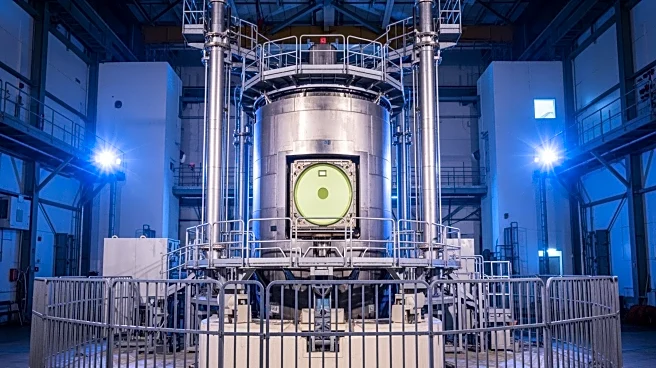What's Happening?
A new version of China's Chengdu J-36 fighter aircraft has been unveiled, showcasing several structural changes from its predecessor. The second prototype, which emerged in October, retains the delta-wing
shape and three-engine configuration of the original model that appeared in December 2024. Notable modifications include redesigned side engine intakes, landing gear, and engine nozzles. The new prototype features forward-swept engine intakes, replacing the caret-shaped trapezoidal intakes of the first model. Additionally, the aircraft's three engine exhausts are now more angular and recessed, suggesting the inclusion of two-dimensional thrust vector control paddles. The rear landing gear has also been altered from a tandem 'bogie'-like configuration to a more conventional side-by-side layout, resulting in a redesigned, deeper landing bay.
Why It's Important?
The development of the Chengdu J-36 fighter aircraft is significant as it reflects China's ongoing advancements in military aviation technology. The structural changes in the new prototype suggest improvements in aerodynamics and maneuverability, potentially enhancing the aircraft's combat capabilities. This progress is crucial for China's military strategy, as it seeks to modernize its air force and strengthen its defense capabilities. The advancements in the J-36 could also influence global military dynamics, prompting other nations to accelerate their own defense technology developments. The introduction of two-dimensional thrust vector control paddles, in particular, could provide the aircraft with superior agility, making it a formidable asset in aerial combat scenarios.
What's Next?
As the Chengdu J-36 program continues to evolve, further testing and evaluation of the new prototype are expected. These tests will likely focus on assessing the performance and reliability of the redesigned components, such as the engine intakes and landing gear. The successful integration of these features could lead to the production of additional prototypes and eventually, full-scale production. The international defense community will be closely monitoring these developments, as they could have implications for regional security and military balance. Additionally, the advancements in the J-36 may prompt other countries to enhance their own fighter aircraft programs to maintain competitive parity.
Beyond the Headlines
The unveiling of the new J-36 prototype highlights the broader trend of technological innovation within China's defense industry. This development underscores the country's commitment to achieving self-reliance in military technology and reducing dependence on foreign suppliers. The progress in the J-36 program also reflects China's strategic focus on enhancing its air power projection capabilities, which could have long-term implications for regional security dynamics. As China continues to invest in advanced military technologies, it may also seek to expand its influence in global defense markets, potentially offering the J-36 to international buyers in the future.












